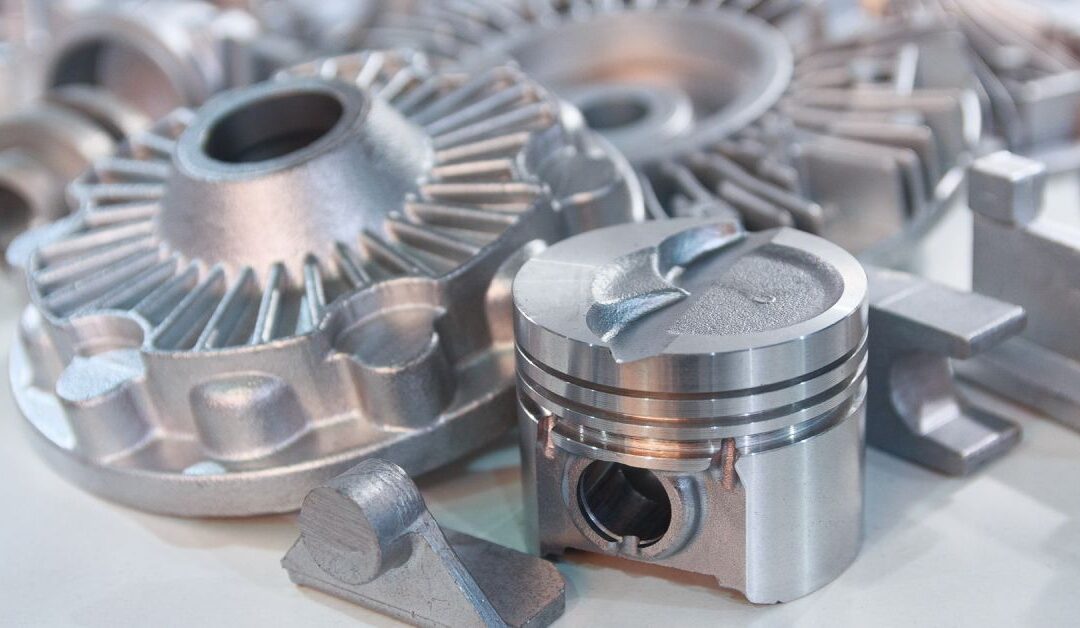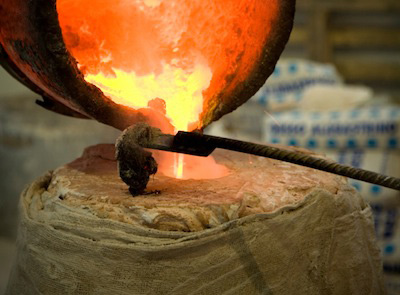Exploring Metal Castings and their practical uses across multiple industries
Wiki Article
A Deep Dive Into the Different Sorts Of Metal Casting and Their Makes use of
Metal Casting incorporates various techniques, each tailored for details applications and requirements. From the economical sand spreading technique to the accuracy of investment casting, each procedure has distinct benefits. Pass away casting stands out in high-volume production situations, while lost foam casting presents ingenious design possibilities. Furthermore, irreversible mold and mildew spreading is recognized for its longevity. Understanding these techniques opens up a window into their useful uses and ramifications in various industries. What exists beneath the surface area of these casting techniques?Sand Spreading: A Affordable and functional Approach
Although various casting techniques exist, sand spreading remains one of one of the most functional and economical methods in the metalworking industry. This technique utilizes a mixture of sand and a binding representative to create molds, enabling the manufacturing of components in varied shapes and sizes. Sand casting is particularly beneficial for small to tool manufacturing runs, as it needs marginal in advance financial investment in tooling compared to other casting strategies.The process begins with the production of a mold and mildew, where molten metal is put in to develop the wanted item once cooled down. Its versatility enables the use of various metals, consisting of iron, steel, and light weight aluminum. Additionally, sand spreading can fit complex geometries, making it suitable for a variety of applications, from automotive elements to elaborate creative pieces. On the whole, sand casting's performance and flexibility solidify its relevance in the manufacturing landscape.
Investment Casting: Precision and Detail for Intricate Forms
Investment spreading sticks out as a method renowned for its capability to create very detailed and intricate elements. This process includes creating a wax pattern that is coated with a ceramic shell, which is then heated to get rid of the wax and solidify the shell. The result is an accurate mold and mildew that can record complex geometric shapes with exceptional accuracy.This spreading strategy is especially beneficial for generating parts with thin walls, great attributes, and tight resistances, making it perfect for markets such as aerospace, automotive, and medical tools. Investment spreading fits a range of steels, consisting of stainless-steel, aluminum, and titanium, making it possible for makers to meet details material demands.
Moreover, the procedure decreases machining needs post-casting, which can improve effectiveness and minimize manufacturing costs. Generally, investment spreading is a favored option for applications where accuracy and detail are vital.
Pass Away Casting: High-Volume Production With Excellent Surface Area Finish

Pass away casting is a very effective manufacturing procedure that stands out in generating big volumes of steel parts with exceptional surface area coatings. This technique entails compeling liquified metal right into a mold dental caries under high stress, permitting rapid manufacturing cycles and uniformity in the finished products. Typically made use of products consist of magnesium, zinc, and aluminum, which supply superb mechanical homes and rust resistance.
Pass away casting is particularly beneficial for industries such as vehicle, electronic devices, and durable goods, where precision and top quality are paramount. The process enables complex designs, minimizing the demand for additional machining and finishing procedures. Furthermore, the smooth surfaces created through die spreading usually call for minimal post-processing, causing reduced general manufacturing expenses. As a high-volume manufacturing method, pass away spreading is excellent for producers seeking effectiveness without jeopardizing on quality, making it a preferred option for numerous applications throughout various markets.
Lost Foam Casting: Ingenious Strategy for Intricate Styles
Lost anchor foam spreading reinvents the manufacturing of complicated steel parts by using a distinct process that removes the requirement for standard molds. Rather of conventional mold-making, this approach uses a foam pattern that is coated with a refractory material. As soon as the pattern is set, molten steel is poured straight into the mold, triggering the foam to evaporate and leave behind an exact cavity for the metal to fill. This innovative technique enables intricate designs and thorough features that might be challenging to achieve with other casting approaches.In addition, shed foam casting can decrease waste and power intake, making it an eco pleasant choice. Industries such as aerospace and auto benefit greatly from this technique, as it sustains the production of lightweight elements with intricate geometries. On the whole, shed foam spreading stands out for its ability to provide premium, customized metal components successfully.
Long-term Mold Casting: Toughness and Uniformity in Metal Components
Irreversible mold spreading is a highly effective technique for producing resilient and regular steel components, leveraging reusable molds that are commonly made from steels such as iron or steel. This casting procedure involves putting liquified steel into these molds, which are preheated to boost product quality and decrease flaws. Discover More Making use of reusable molds not just minimizes waste yet likewise allows for greater manufacturing prices, making it financially advantageous for manufacturers.The resulting parts exhibit excellent dimensional accuracy and surface area finish, making them perfect for applications in automobile, aerospace, and commercial equipment. In addition, permanent mold and mildew casting can suit a selection of alloys, further expanding its flexibility. The durability of the actors components is enhanced due to the controlled air conditioning prices that promote better grain structures. Generally, this casting strategy stands out for its capacity to generate top quality steel components that meet extensive efficiency criteria, making certain reliability in requiring atmospheres.
Regularly Asked Questions
What Materials Can Be Made Use Of in Various Steel Casting Processes?

Different materials can be utilized in Metal Casting procedures, consisting of light weight aluminum, bronze, iron, and zinc. Each material provides unique buildings, affecting the spreading approach's performance, strength, and suitability for different applications in production.
Just How Do Casting Methods Influence the Mechanical Features of Metals?
Casting techniques significantly influence the mechanical residential properties of steels, affecting aspects like toughness, hardness, and ductility. Variants in cooling rates and mold materials can lead to various microstructures, eventually impacting the efficiency of the last item.What Are the Environmental Effects of Metal Casting Procedures?
Metal Casting processes can cause air and water air pollution, source deficiency, and considerable power consumption (Aluminum Foundry). Furthermore, the generation of waste materials and greenhouse gas exhausts considerably impacts the environment and contributes to climate changeJust how Do You Pick the Right Spreading Technique for a Job?
Picking the right spreading approach entails evaluating task demands, material residential or commercial properties, intricacy, and production quantity. Elements like expense efficiency, coating high quality, and preparation also play essential roles in establishing the most ideal technique.What Safety and security Safety Measures Should Be Taken Throughout Metal Casting Operations?
Throughout Metal Casting operations, safety and security preventative measures include putting on safety gear, guaranteeing proper air flow, conducting equipment examinations, preserving a clean office, and having emergency protocols in position to manage potential dangers like try this site burns or toxic fumes.From the economical sand spreading method to the precision of investment spreading, each procedure has unique advantages. Pass away spreading is a very reliable manufacturing process that excels in creating huge quantities of steel parts with exceptional surface area finishes. Lost foam spreading reinvents the manufacturing of complex steel components by using an unique process that gets rid of the requirement for traditional mold and mildews (Metal Castings). Irreversible mold casting is a very reliable approach for producing constant and sturdy steel parts, leveraging reusable molds that are typically made from metals such as iron or steel. Numerous materials can be made use of in Metal Casting processes, consisting of light weight aluminum, iron, bronze, and zinc
Report this wiki page